Learn everything you need to know about brick flooring, including how to install, clean and protect with a sealant.
These are thin brick pavers that create a warm, cozy and vintage-inspired feel in any room in your home!
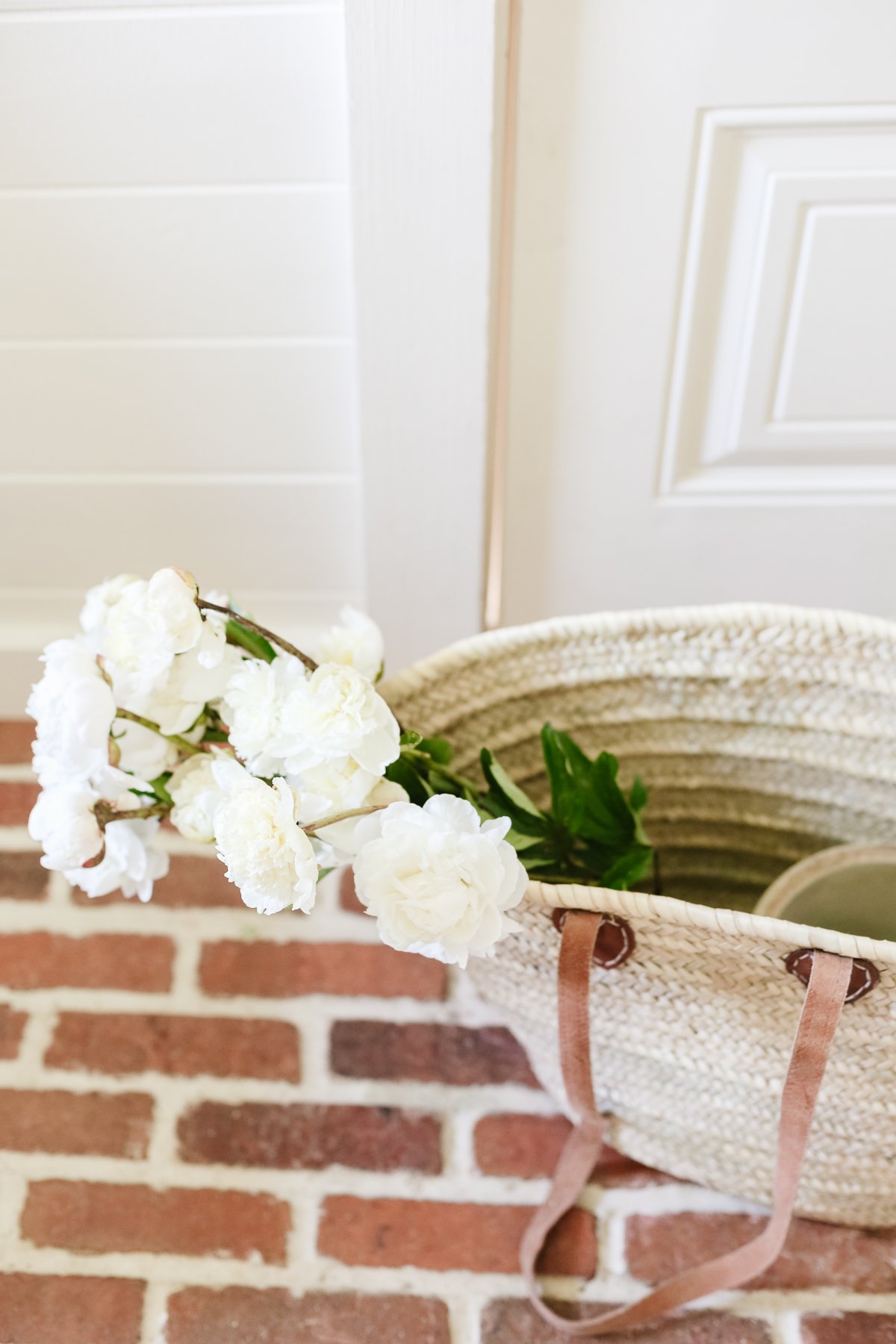
I am frequently asked about our brick flooring in our mudroom and powder room.
In fact, it’s among the most commented on spaces of our home on Instagram and still one of my favorite projects to date.
We’ve updated a lot of rooms in our homes over the years – see our full before and after tour here, as well as the before and after of our lake cottage.
When we moved into our home just a few years ago, I felt it needed more character. It felt like dated builder’s grade construction with little to no detail.
My Great Aunt’s farmhouse had brick floors in the side entryway, which captured the dirt as you entered her home. I had seen brick floor pavers in an array of mudrooms and entryways and decided to take the plunge and add a little function and character to our home.
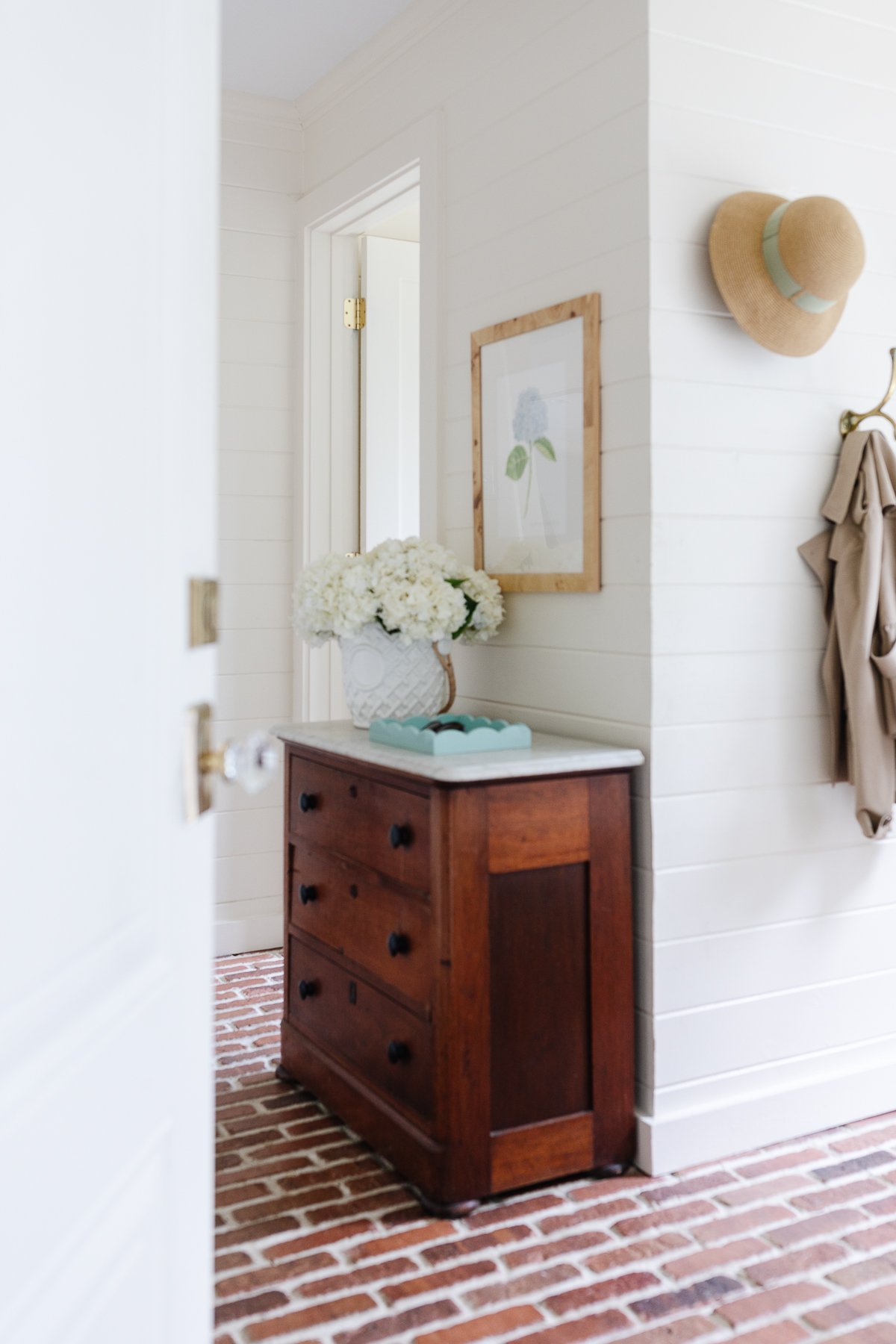
Brick Flooring
I love how brick floors adds warmth, texture, character and integrity to homes old and new.
The brick we selected is a very close match to our brick exterior and fireplace, (don’t miss those makeovers too!). This makes it feel like it was always there.
Why You’ll Love It
While our particular brick flooring is discontinued, you can find so many great brick flooring options here.
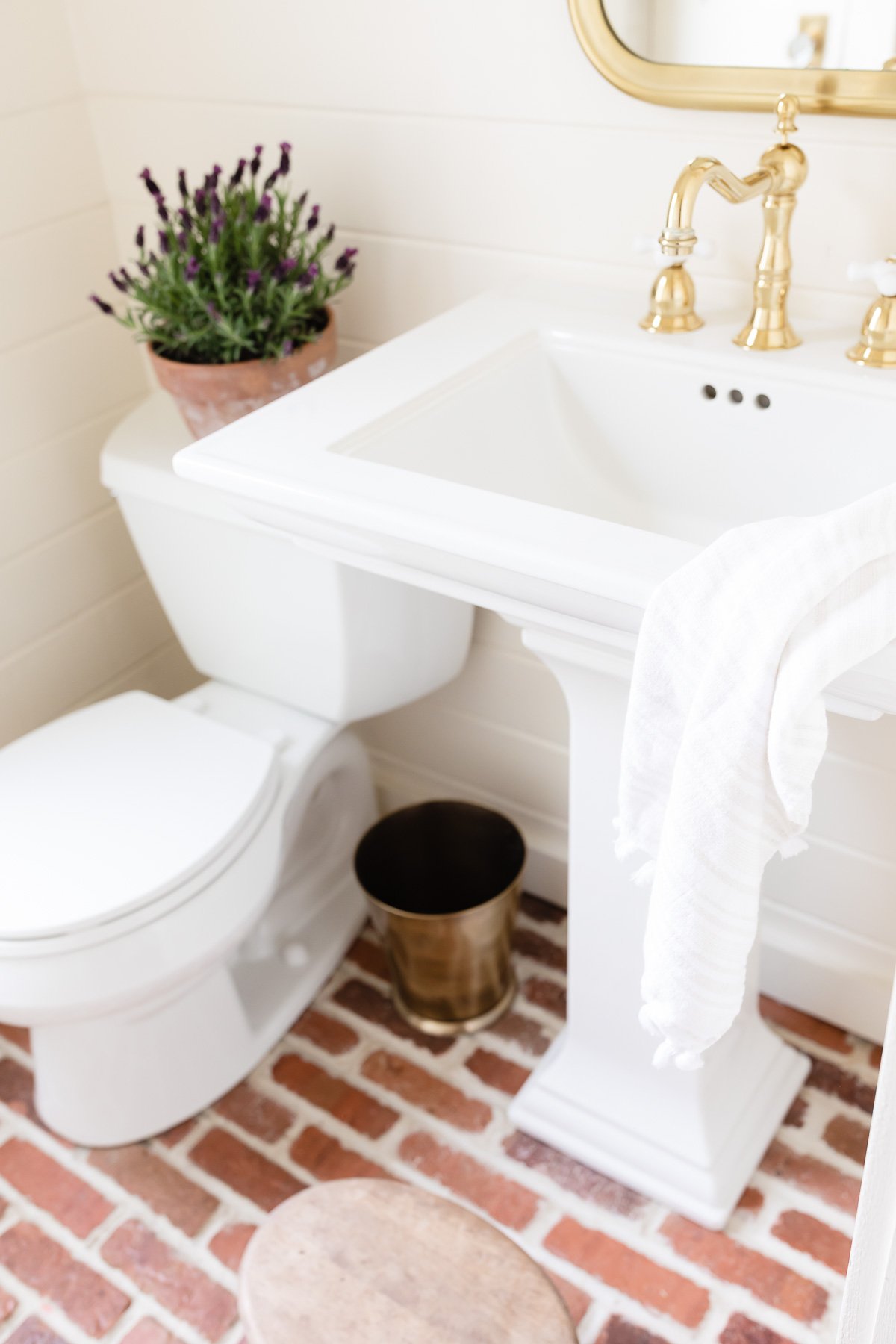
Installation
This flooring is as easy to install as tile!
- First, lay a cement backer board.
- Use mortar in lieu of grout to make it look and feel as authentic as it is. Type-S mortar will give your brick floor a traditional look. If you prefer, you can use tile grout which comes in a wide array of colors.
- It cuts easily with a tile saw or angle grinder.
- I selected a grout in a medium color (not too light, not too dark) that looked a little dirty.
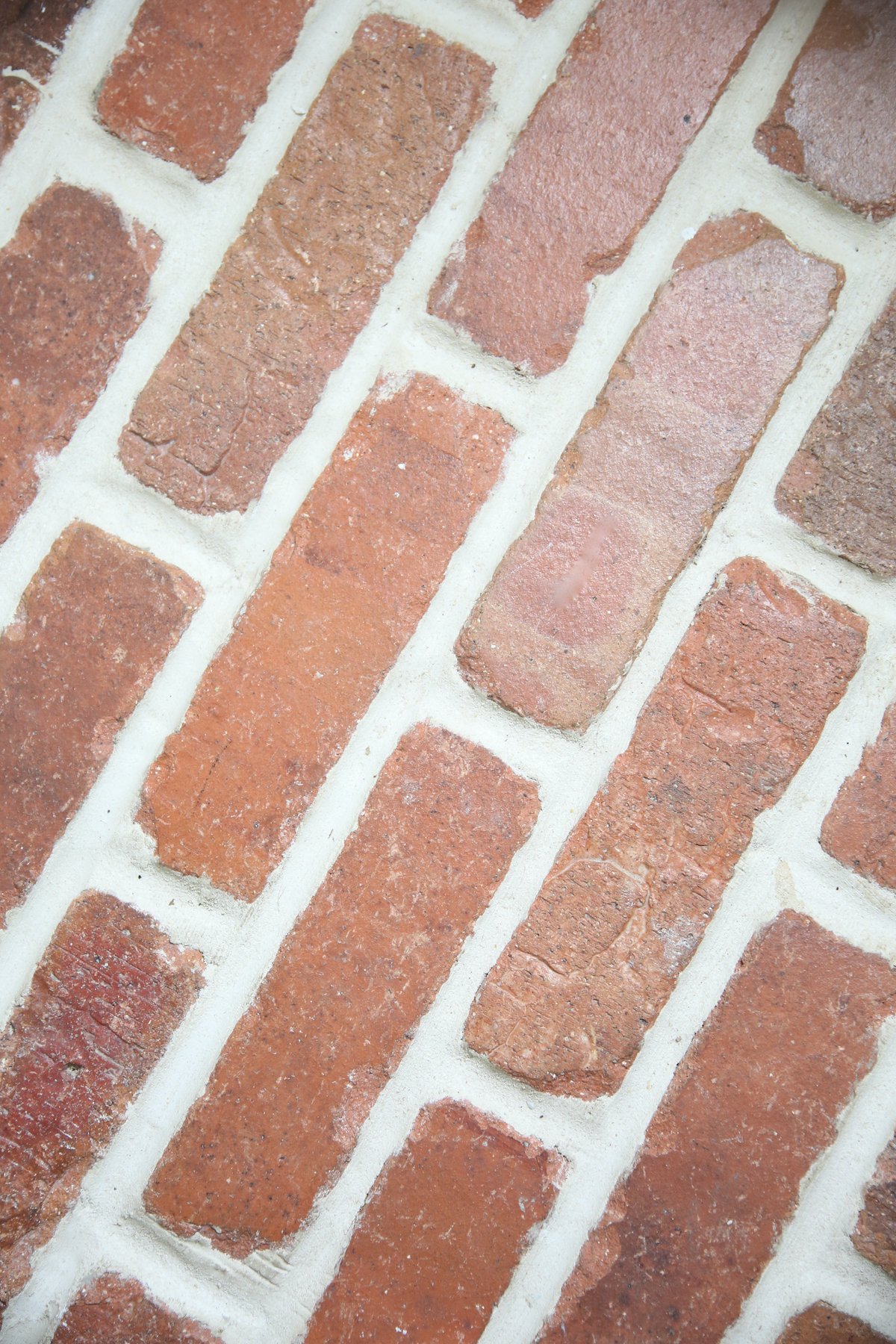

Tips
- Our flooring was not rated for floors, but our flooring installer (who we trusted) approved the product and we moved forward with installation. Nearly a decade later and we’re still in love and they’ve held up beautifully!
- Brick is an extremely durable product and can withstand a lot of wear and tear. It’s also tolerant of being damp from wet boots.
- In addition, it’s heat resistant, so can be used by a fireplace, oven or furnace without fear.
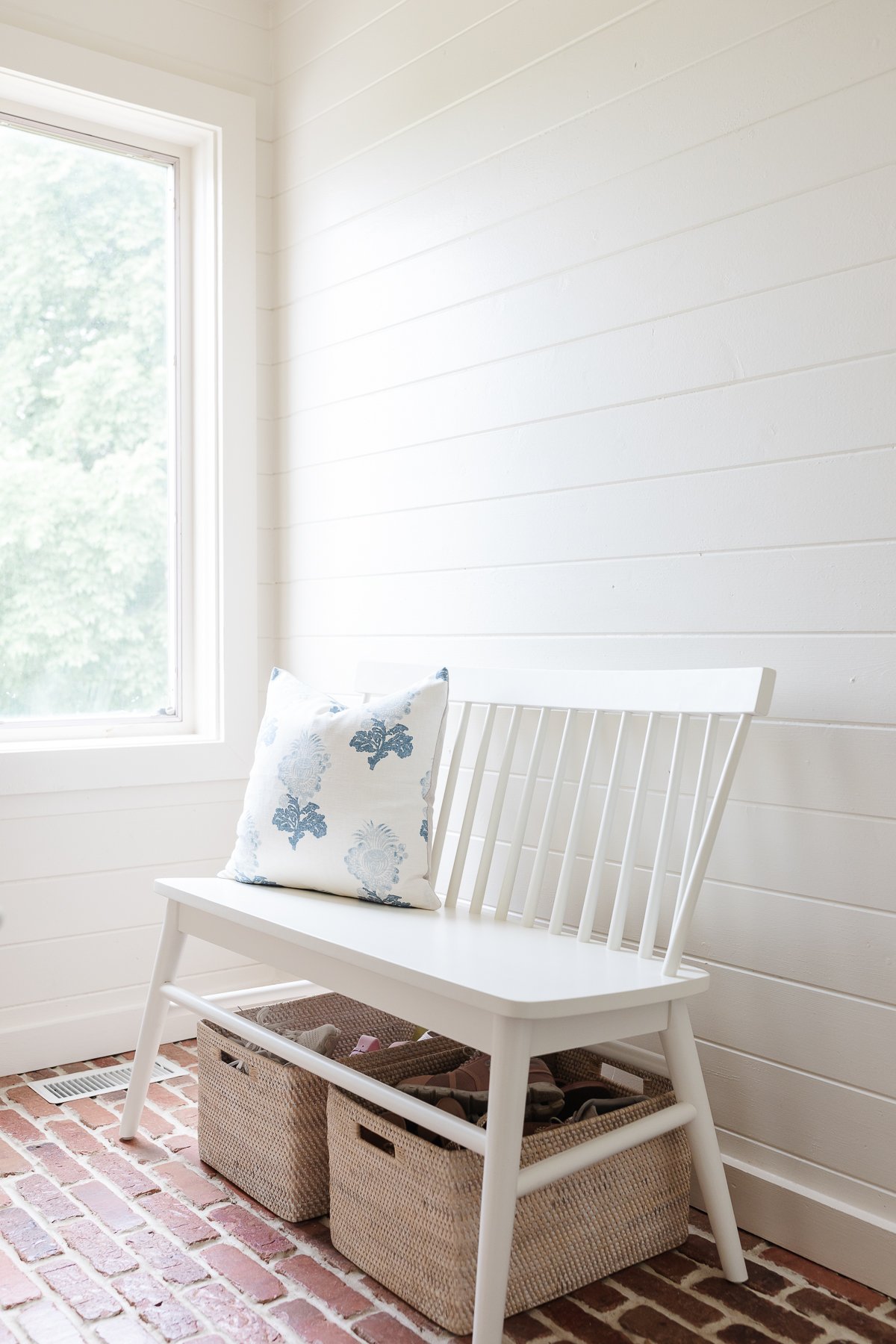
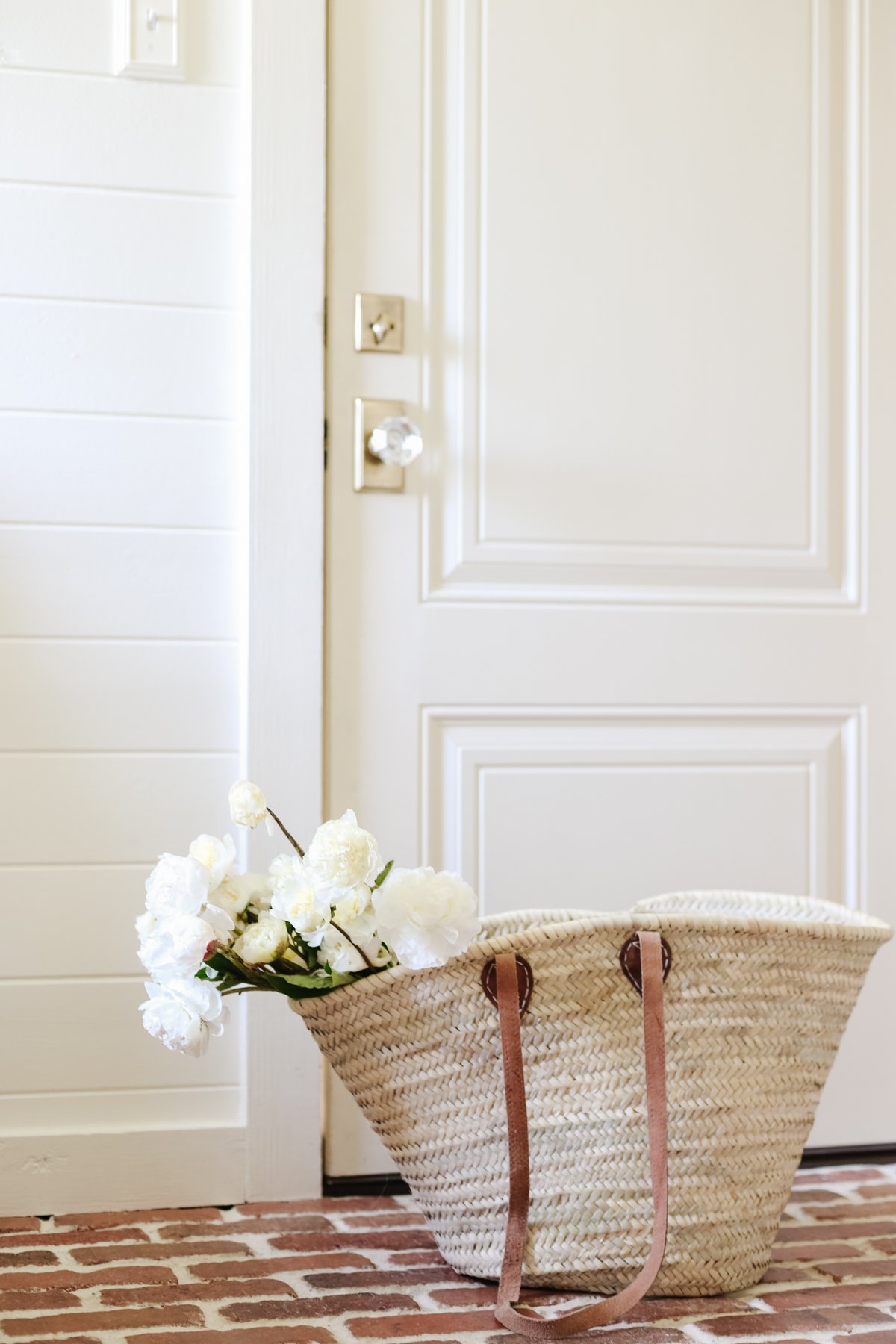
How to Clean Brick Floors
Is it difficult to clean?
That’s one of the most frequently asked questions we’ve received over the years.
Before I respond, please don’t judge, okay? We don’t, really. That’s the beauty of it. The brick flooring gets vacuumed weekly and the occasional mop. If something really gunky happens, I break out a scrub brush (it’s only happened a few times in many years).
It’s nice to have a fuss-free space, especially the one that attracts the most dirt. I personally love how the mortar between catches rocks, dirt, etc so that they aren’t brought into the rest of our home.
You can of course give them a good scrub it you want to, but there is so much beauty in the patina that occurs over time. The hard surface makes it easy to vacuum.
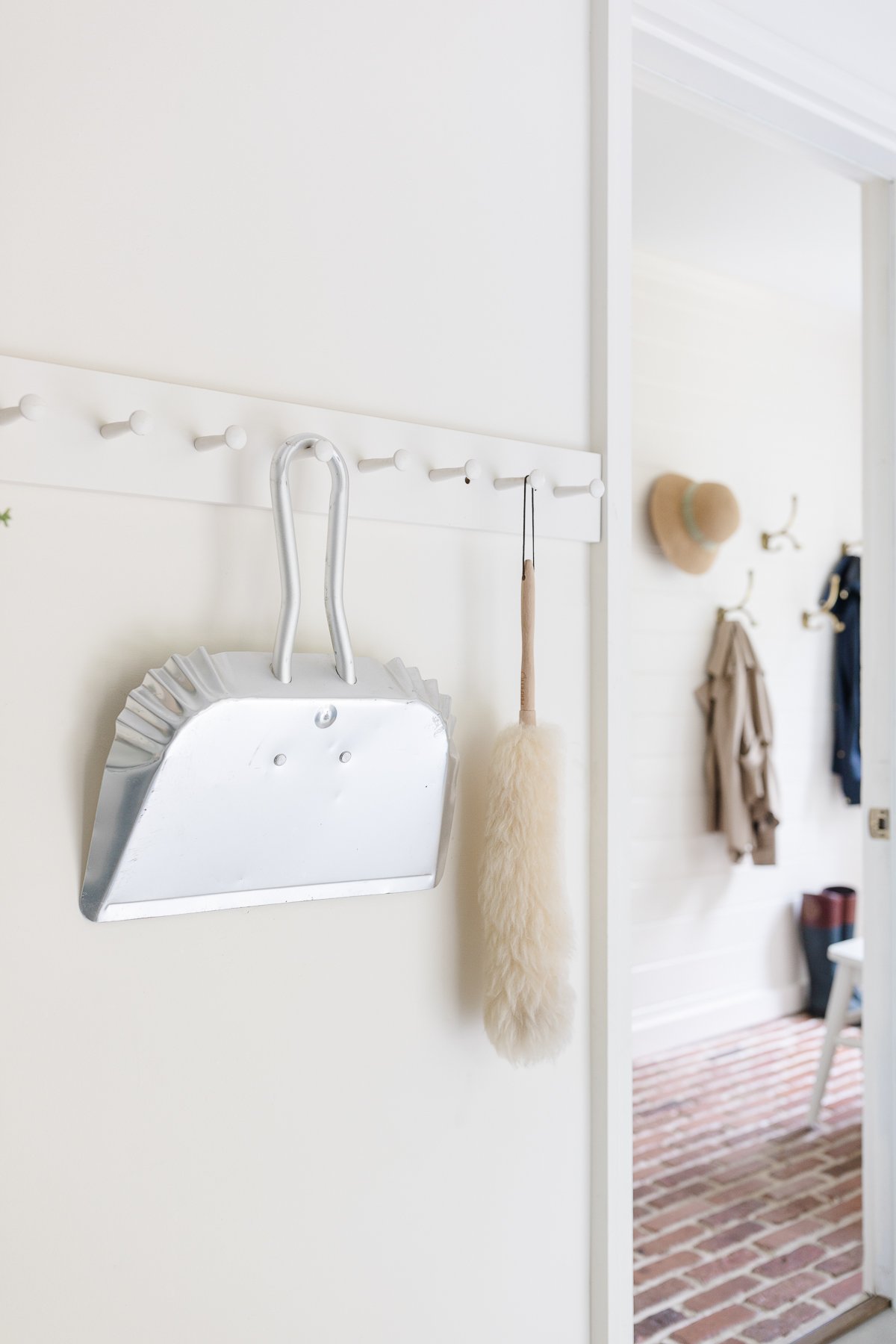
Brick Sealant
Sealing brick is easy! A penetrating sealer that works for tile also works well for brick. Spray or mop it on for an easily cleanable finish.
Penetrating sealer soaks into the brick. A penetrating sealer doesn’t alter the surface or color. Instead, it seeps into the brick and mortar, protecting it.
Alternatively, you can use a polyurethane which adheres over the brick and results in a shiny surface.
A sealant will protect against mold and cracking. Applying a sealer will prevent moisture from buildup up and seeping below the surface.
For optimal results with protection, it should be reapplied once a year. However, we’ve opted not to seal ours again so that it will continue to age and patina.
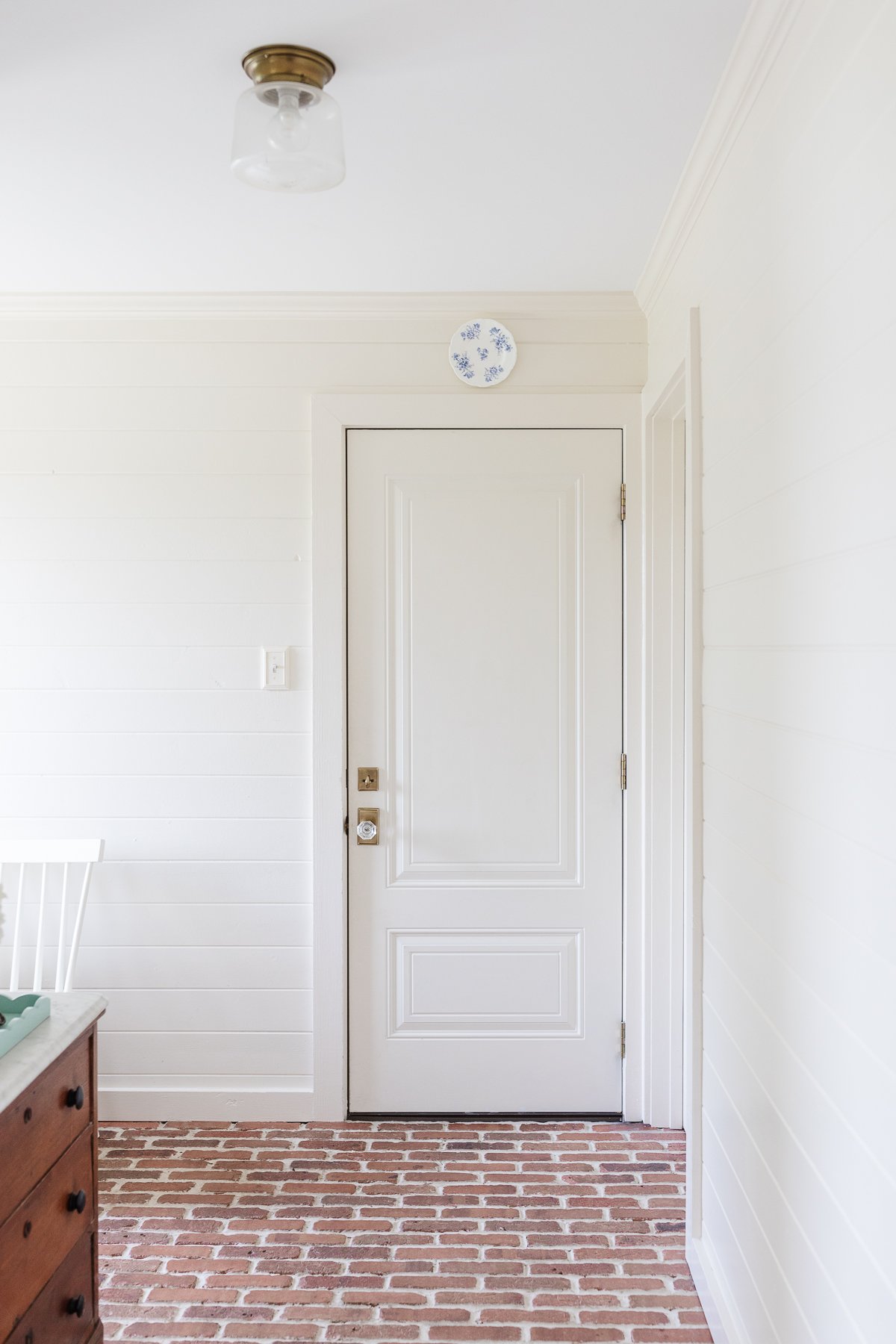
How to Seal Brick Floors
- Clean the floor with warm water and a mild soap, using a deck brush. Rinse with water. Allow the brick to dry completely.
- Using a paint roller or mop, cover the floor “painting” it onto the brick starting on one side and working toward your exit.
- Allow the sealer to dry completely (4+ hours) before use or a second coat.
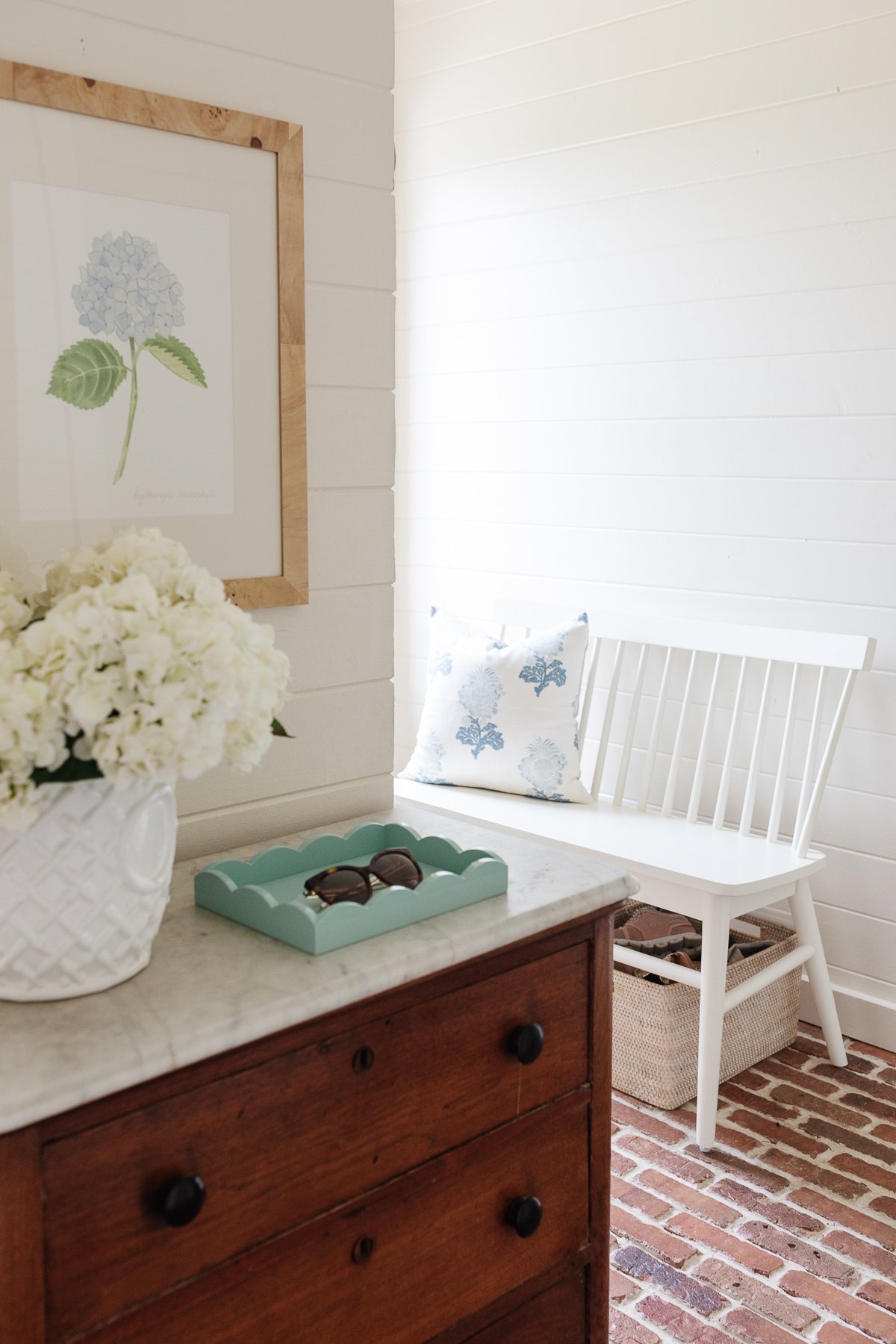
Frequently Asked Questions
Brick flooring is a brick veneer. Thin “sheets” of brick are called thin brick pavers, and they often come in sheets to make them easy to lay.
Brick is made of clay or shale that is pressed, dried and fired in a kiln into a durable ceramic. It comes in a variety of colors which never fade due to the firing process.
It has a slight texture which adds interest to design.
Our brick floors are slightly warmer than tile, but we used it in a space where we’re rarely barefoot. If you’re concerned about it feeling rough, you can choose a sealer accordingly.
Your cost will of course depend on how much brick flooring you’ll need to purchase, and any details of your project. The cost of installation is comparable to tile installation.
In fact, they install similar to tile in sheets. Our brick installation cost about $1,000. Of course, this was in 2016 – adjust accordingly for inflation.

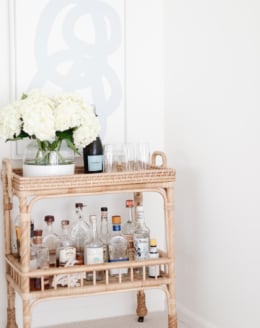
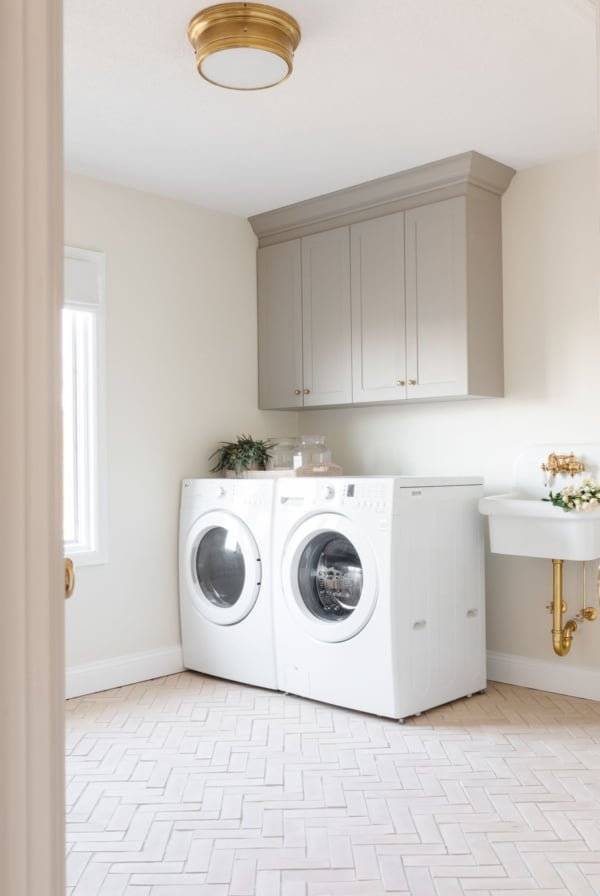
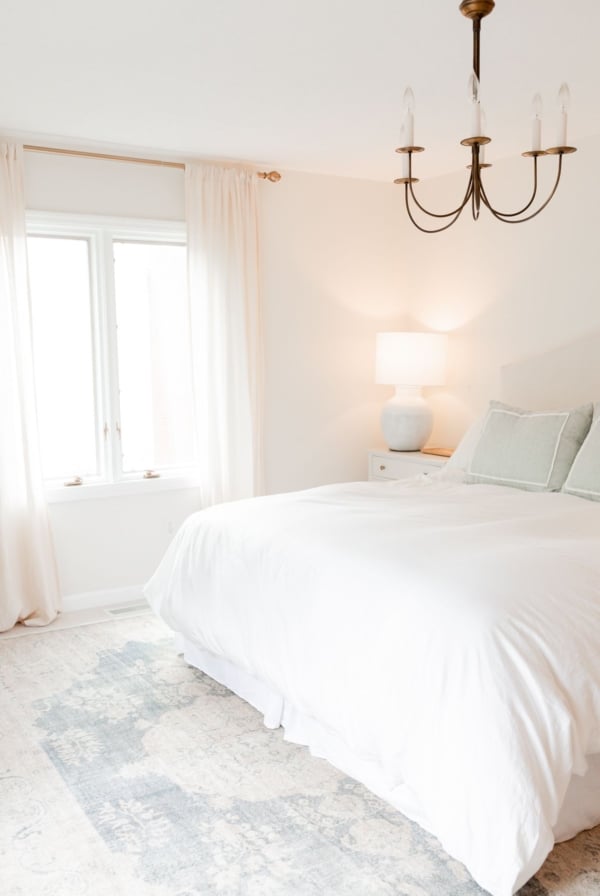
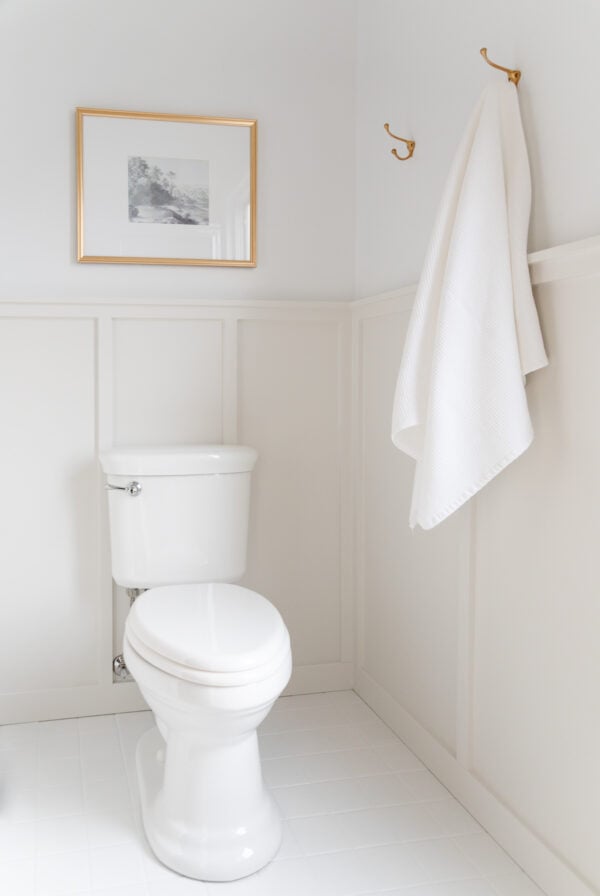
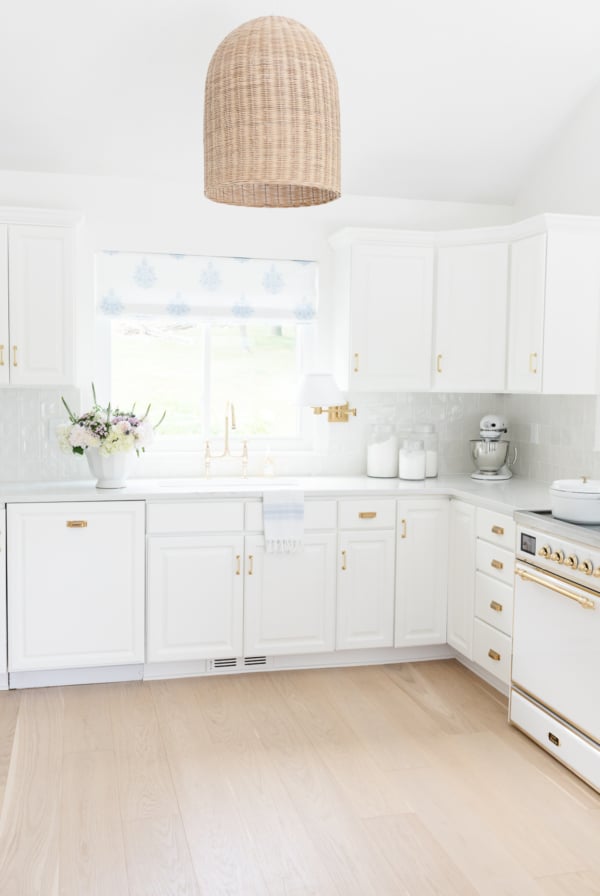
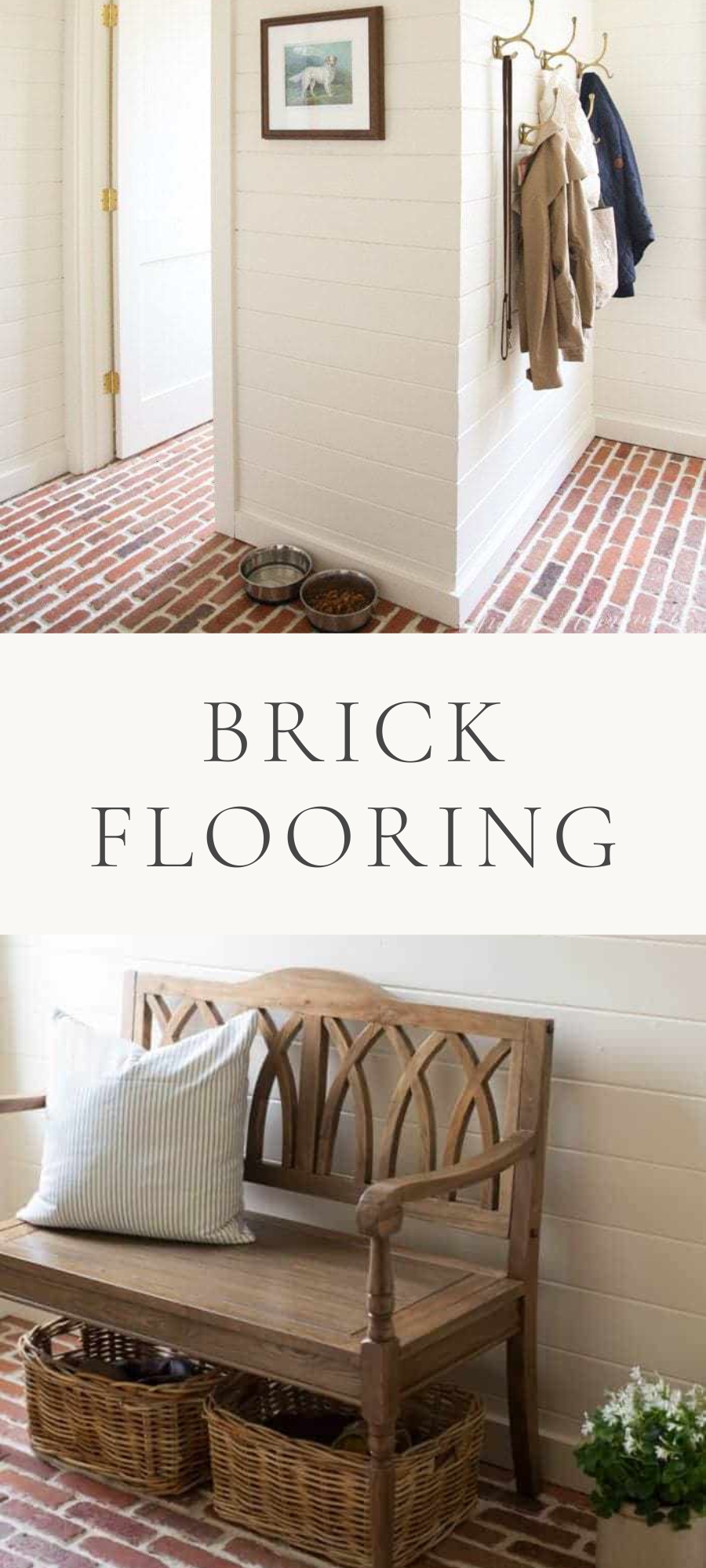

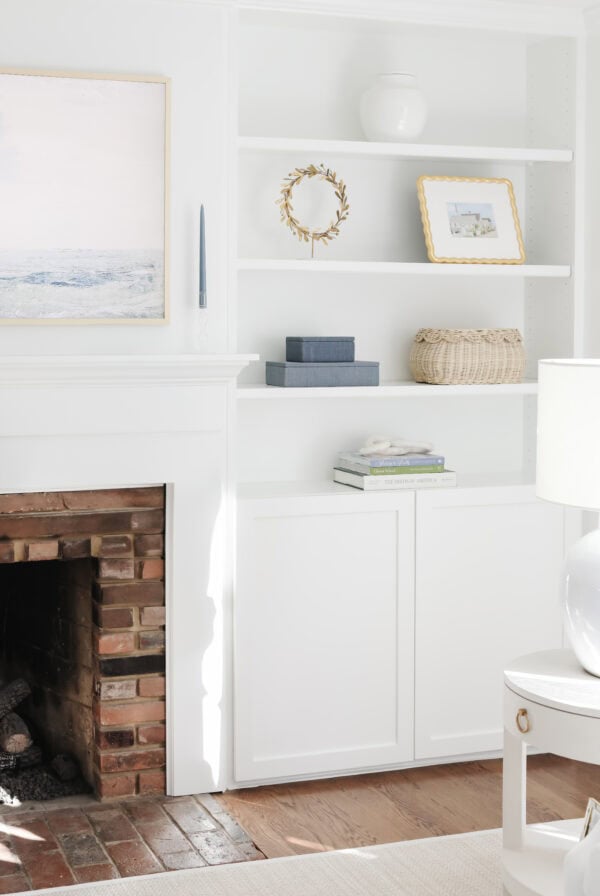
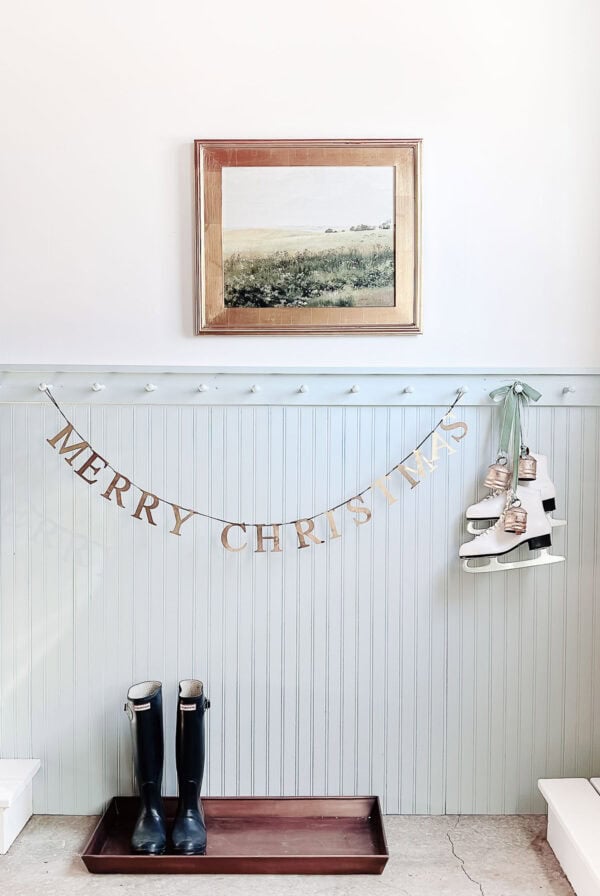






I’ve admired your brick floors for a while on Instagram, learning about easy they are to take care of I’m wanting them even more! Thanks for sharing.
Neelam
Sorry, I’m a horrible influence! I hope you have a great weekend!
Hi Julie , love your brick floor , can you help me? I’m trying to mortar my 1250 brick floor outside underneath my beautiful patio but getting angel hair cracks in my mortar!! Any advice or a trusted trade you can recommend? Regards Peter
Hi Peter,
We had our brick flooring laid by a pro. Luckily it’s held up beautifully for us, but it’s indoors which probably makes a difference with temperature fluctuations and such. Maybe it’s time to call in a patio or brick specialist for an evaluation?
I’m sorry I can’t help more! Good luck with your project!
Julie
Exactly the look I’m wanting in my kitchen. My worries are the transition to the connecting rooms which have wood floors. How are these height wise? Especially if I need to add the backer board to it as well. Thanks for your help. ~Kelly
Mine are the same height as my wood floors and yours should be as well – your wood should be the same thickness as the pavers/backer, but they can always adjust your subfloor if needed. I hope that helps!
Julie how did you connect the wood floor to the brick did you use caulk or did you use grout also what sealer did you use for your bricks? They’re beautiful.
I read this at the perfect time!!!! We did the exact bricks on our patio. Our bricklayer said the sane as your floor guy, although the store was telling me i could t do a floor with it. My question is did the sealant add shine? I love the old rustic look and i don’t want it shiny…. Do you mind sharing which you used? Thank you so much.
I cannot recall, it was years ago and we decided not to reseal and to let it patina.
Hi Julie~ The link you provided to Lowe’s re the brick…. Is that the same color you used and if not, could you specify which color you did use? It’s lovely!
It is, thanks Jill!
Wow. That brick flooring really is gorgeous. It really makes me think of the southern plantation houses that I used to see in Virginia. The fact that it’s also so easy to maintain sounds perfect. ????
Thanks, Leslie! That was my inspiration – I just love Southern style. Have a beautiful weekend!
Julie,
Lovely post. I have always loved your mudroom and powder room, and the brick flooring “makes” the space. I have terra cotta floors throughout our house, and I love it. Does not show dirt, vacuums easily, and an occasional damp mop.
Sounds beautiful! I always for effortless!